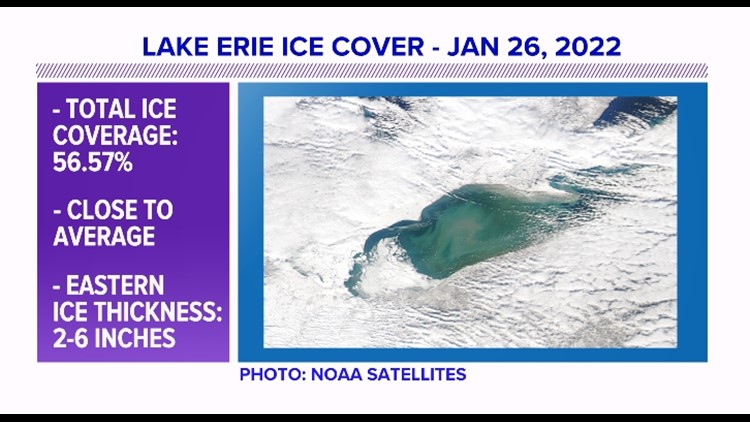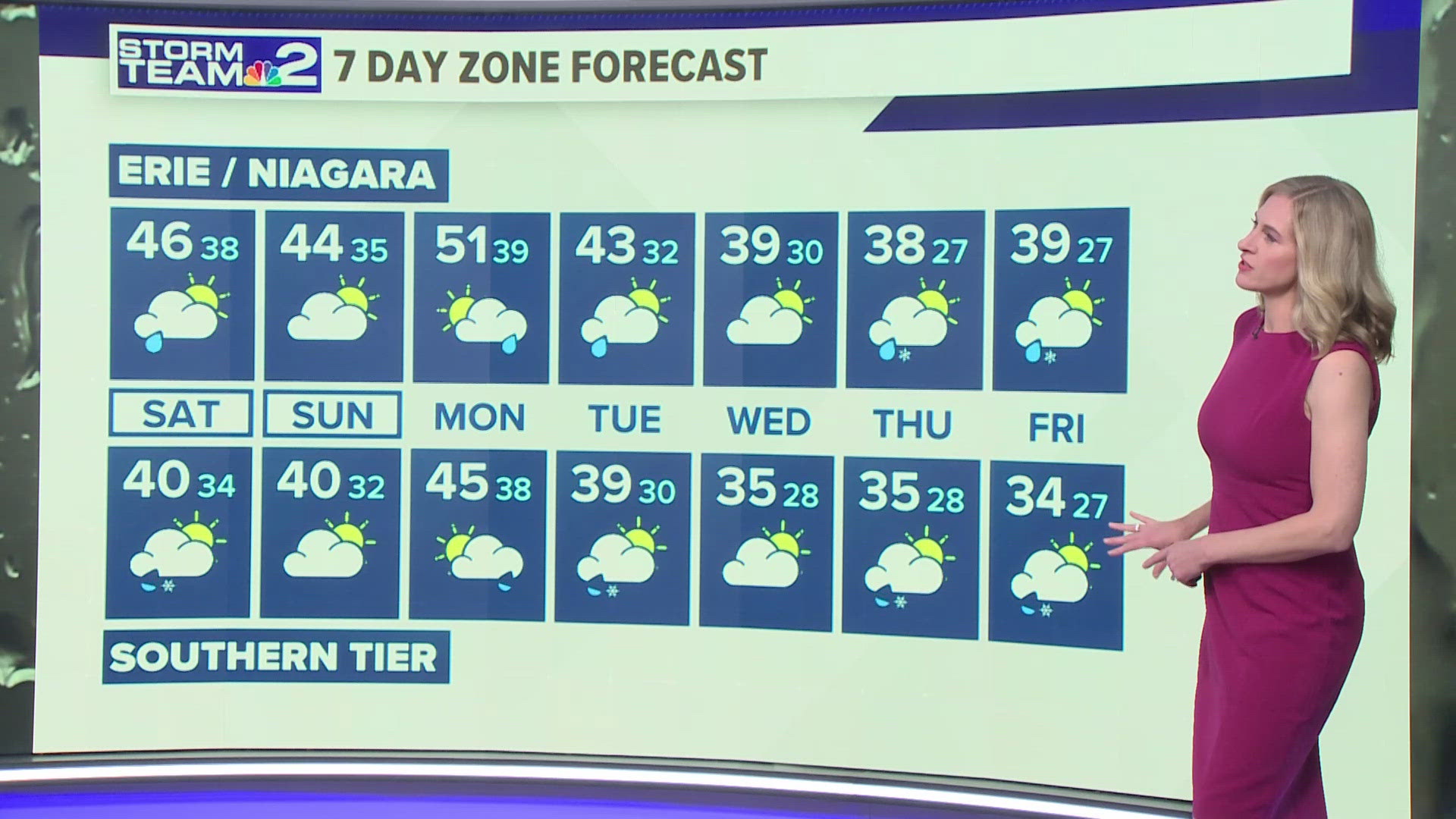BUFFALO, N.Y. — This January has been undoubtedly cold and snowy for Buffalo and Western New York with record snowfall and several morning when temperatures dipped into the single digits.
But that all wasn't for nothing, especially in regard to Lake Erie and its seasonal ice development.
As of Wednesday, January 26, Lake Erie's observed ice coverage was 56.57 percent. This is an important benchmark for the season as the lake is now officially over halfway ice covered, and back on track, and even met up with the historical average for this time of year.
The historical average of ice concentration, calculated from 1973 to 2021, has Lake Erie being 55 percent covered by January 31.
So after an extremely slow start to the lake's ice season, Lake Erie's ice coverage is back on track! This is no, doubt, thanks to the several arctic blasts that the region has seen this month.
But just a month ago there was little to no ice on Lake Erie until the first cold blast in early January. No surprise as Buffalo had it's second warmest December on record for the month in 2021.
Most of the ice coverage on Lake Erie, and thickest too, is on the lake's western end near Cleveland. This is to be expected as the lake is not as deep on its western end than here near Buffalo. Still, it's estimated that the ice that is over Lake Erie along Western New York and near Buffalo is between two to six inches thick.
Lake Erie's ice coverage peak comes in mid-February, where history shows that about 75 percent of the flake is frozen over by then. The last time the lake completely froze over was in 1996, when it reached 100 percent on February 5, 1996. But there's been as little as 15.9 percent for a seasonal peak in 2020.
As for Lake Ontario, the ice concentration and coverage is around 17 percent. That's actually slightly above average for the lake as it rarely ever freezes over 20 percent for the entire season, and that peak typically comes in mid-late February.
But looking ahead to February, there's the chance that a pattern change could allow for temperatures to return to seasonal or even above average for early-mid February. This could lead to some ice melt instead on each lake if it's shallow enough, so it's entirely possible that the peak ice coverage for Lake Ontario and Lake Erie may occur within the next few days.
Observations and records for Great Lakes ice coverage are from the Great Lakes Environmental Research Laboratory.



